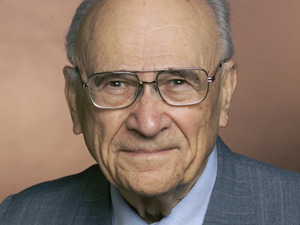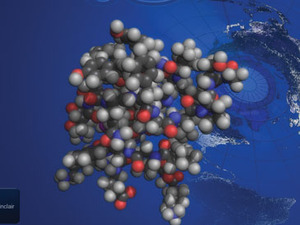Folding@Home
Much like ‘The Sunday Times’ Rich List tracks wealthy business people, there’s also a competitive league table of the world’s most powerful supercomputers. IBM’s Roadrunner supercomputer currently tops the Top 500 chart. With 129,600 CPU cores, the mammoth machine has a quoted number-crunching rate of 1.46 petaflops. This is incredible stuff, especially when you consider that most of us haven’t really thought about computing performance in terms of petaflops before.However, even Roadrunner looks decidedly weedy compared with the power of Stanford’s Folding@home project. Its computational power has now surpassed the five petaflops mark. Comprising a huge network of Internet-connected PCs, Folding@home is really the world’s most powerful supercomputer. You may well have crunched through a few work units for Folding@home, and you probably know that it benefits medical research. But how exactly does it do this and has it produced any worthwhile results?
Folding@home is a distributed computing project based at the world-renowned Stanford University in the USA and is used by research scientists to run medical simulations in order to work out how and why proteins (one of the building blocks of life) fold. Folding is the medical term for the process proteins undergo when they interact with each other. Many diseases, such as Alzheimer’s and Mad Cow Disease (BSE), are caused in part by proteins misfolding.
What is a protein?
Let’s start with the science behind Folding@home, which is protein folding. In simple terms, a protein starts out as a long string of amino acids, but it can’t perform its biological function until this string is transformed into a three-dimensional shape. This transformation is called folding, and once the protein has folded, it can then perform its biological function.However, proteins can also misfold and take on a different three-dimensional structure. A simple example of this process can be seen when cooking an egg. Crack an egg into a pan, and you can see the proteins of the egg white in their natural runny state. As you apply heat to them, the proteins start to unfold. After this, the amino acids from the different proteins that comprise the egg white will then mix, causing the egg white to change texture and become solid. Proteins changing like this inside the body can have drastic consequences, though, particularly as the process is often irreversible.


Left: Protein folding expert Professor Harold Scheraga believes that we may have a cure for Alzheimer’s in ten years; Right: Folding@Home's GPU client in action
A scientist who has been researching protein folding for many decades is Professor Harold A Scheraga, based at Cornell University near New York. "There are genetic diseases," he explains, "in which a particular amino acid might have been mutated to another one. That will change the interactions between the different parts. Because one amino acid is different, it doesn’t fold into the proper form, so it doesn’t perform its biological function.
"Sickle Cell Anaemia is a good example of that. One particular amino acid is changed, and the haemoglobin – that’s a protein in the red blood cell that binds oxygen – starts to aggregate one molecule with another to form a big glob instead of folding properly. It distorts the structure of the red blood cell into the form of a sickle. Since haemoglobin has to bind oxygen in an un-deformed red blood cell, and carry it around in the blood, the red blood cell isn’t functioning well, so somebody who has that disease won’t get enough oxygen."
As Scheraga points out, this is just one example of a situation where misfolding leads to diseases. Another prominent misfolding disease is Alzheimer’s, which also results from proteins misfolding and aggregating with other molecules to form big globs. "In Alzheimer’s, the misfolding forms big clumps in the brain," he said.

MSI MPG Velox 100R Chassis Review
October 14 2021 | 15:04









Want to comment? Please log in.